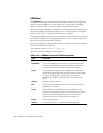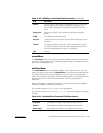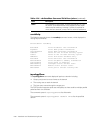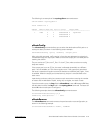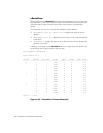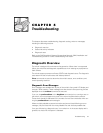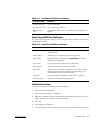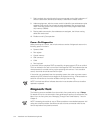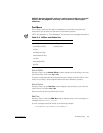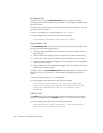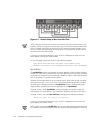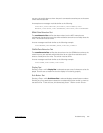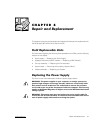
5-4 Installation and Troubleshooting Guide
7. Fabric analysis; the switch checks for ports connected to other fabric elements. If
there are other fabric elements connected, it identifies the master switch.
8. Address assignment; after the master switch is identified, port addresses may be
assigned. Each switch tries to keep the same addresses that were previously
used. These are stored in the switch’s configuration flash programmable read-
only memory (PROM).
9. Routing table construction; after addresses are assigned, the Unicast routing
tables are constructed.
10. Enable normal N_Port operation.
#$&
When powering-on a switch, the switch conducts a series of diagnostic tests on the
following system functions:
Dynamic RAM
Port register
Central memory
CMI connector
CAM
Port loop back
If the switch fails to complete POST successfully, the green power LED is set to blink.
This is an indication of a fault in one of the initial stages of POST and indicates that the
microprocessor is not able to bring up the operating environment. If this condition
occurs, the switch should be returned for repair.
If the switch can completely boot the operating system, but other errors are encoun-
tered during POST, these errors are logged in the system error log. A Telnet session or
serial link connection to the switch enables viewing of the error log.
NOTE: A switch boot failure indicates the switch must be taken off-line to be either
repaired or replaced.
"
The following tests are available from the switch’s front panel and by way of Te l n e t .
For details on how to use the switch’s front panel buttons and how to access the Test
Menu from the front panel, see “Managing Through Front Panel Buttons,” found in
Chapter 3.
NOTE: Accessing the switch by way of Telnet provides a more detailed response indi-
cating the switch’s condition and allows the use of some commands which do not
have an equivalent front panel command.



